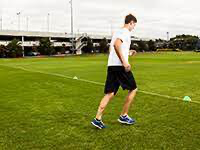Developing fitness for team sports is an essential part of every off-season and pre-season. But it is no good just getting a team of 30 people to run around a field until they are really fatigued. There are procedural and accurate methods in which sports scientists and strength and conditioning coaches can program fitness training to achieve specific targets relevant for the athlete’s sport. This is MAS training.
MAS or ‘maximal aerobic speed’ is the fastest speed at which an athlete can run, row, ride etc. for an extended period. Think of it as being the speed equivalent of your fitness level. If you’re really fit, you are able to move at a faster pace for longer and vice versa for less fit individuals. To calculate MAS you record the time it takes for an athlete to complete a set distance, commonly 1.2km to 2km. You may have heard of them as a 1.2km time trial for example.
To best calculate MAS, you need to convert distance to meters and time to seconds.
Let’s say:
Athlete A completes a 1.2km time trial in 5 minutes: their MAS would be: 1200m/300s = 4m/s.
Athlete B completes a 1.2km time trial in 5:40: their MAS would be: 1200m/340s = 3.5 m/s.
It is using this MAS value, that sports scientists and strength and conditioning coaches can prescribe cardiovascular fitness drills at certain percentages to target different aspects of fitness. Anything less than 100% MAS = aerobic, anything more than 100% MAS = anaerobic.
Depending on the requirements of the sports, fitness drills parameters can be manipulated to reflect match-like situations.
An example of an MAS drill is running rectangles: athletes have a set time to run one length of the rectangle (lets say 15s), using the long and short sides of the rectangle to act as interval type training. Based on the percentage of MAS the athletes need to be running at, the rectangles will change in size. So lets say athletes A’s running percentages are 60% (short side) and 110% (long side). The length of the rectangle will be 66mx36m.
You can very easily change these parameters based on what aspects of fitness you want to train. I recommend having play around with different percentage splits to see what works for you and your team.




